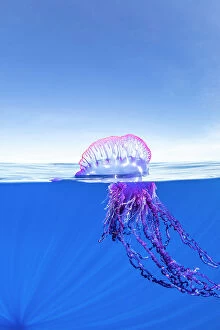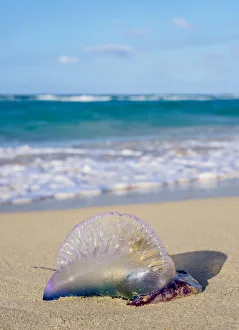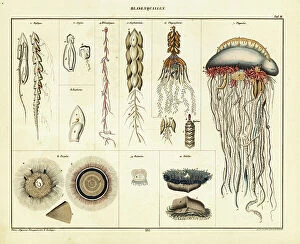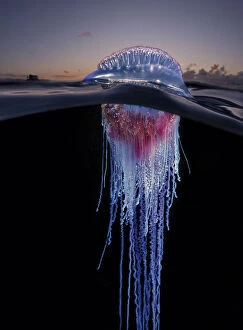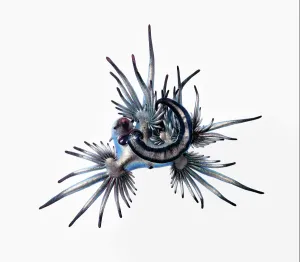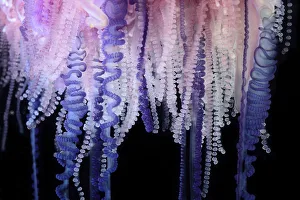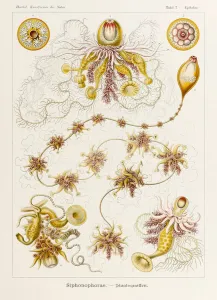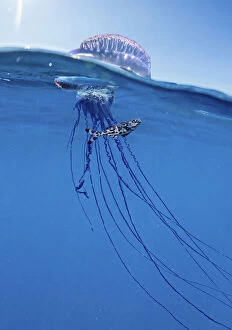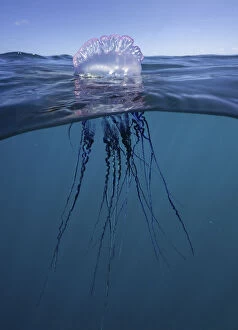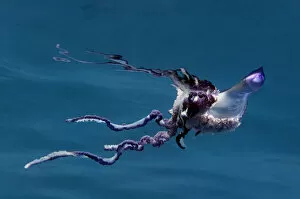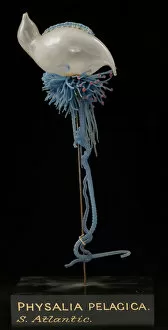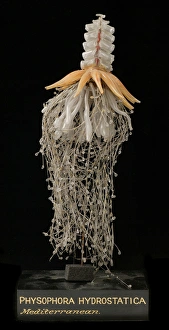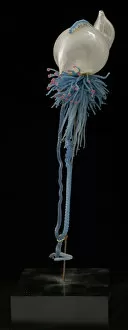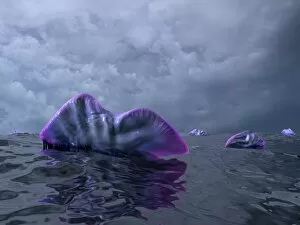Siphonophore Collection
The siphonophore, a fascinating creature found in various parts of the world's oceans
All Professionally Made to Order for Quick Shipping
The siphonophore, a fascinating creature found in various parts of the world's oceans, shares intriguing connections with the Portuguese man o war and other marine species. In Tenerife, Canary Islands, one can witness the majestic presence of the Portuguese man o war (Physalia physalis), its vibrant colors contrasting against the blue sea. Similarly, at Santa Maria del Mar Beach in Havana, Cuba, these jellyfish grace the shores with their ethereal beauty. But it is not just their appearance that captivates us; it is also their symbiotic relationships within this ecosystem. The Man-of-war fish (Nomeus gronovi) fearlessly resides amidst the deadly tentacles of the Portuguese man o war. Astonishingly resilient to its toxin compared to other fish species, this little creature thrives in harmony with its venomous host in Dominica's Caribbean Sea. Nature never ceases to amaze us as we discover more about these intricate connections. Take for instance the Blue sea slug (Glaucus atlanticus), which predates on Indo-Pacific Portuguese man-of-war and possesses immunity to their venom. Thousands of them were stranded ashore alongside these jellyfish during a mass stranding event. A close-up view reveals even more wonders hidden within this realm: nectophores and palpons adorning Siphonophores like Nanomia sp found in Gulf of Maine's Atlantic Ocean waters. These delicate structures showcase nature's artistry up close. Occasionally tragedy strikes when life meets its end on rocky shores or during massive strandings like those witnessed off South Africa's coastlines where thousands of Indo-Pacific Portuguese Man-of-War met an unfortunate fate together. Yet amidst all these tales lies an undeniable truth – resilience and survival prevail even among such creatures deemed dangerous by humans. Floating gracefully upon Azores' Atlantic Ocean surface are Portuguese man o wars - a testament to their ability to adapt and thrive.


